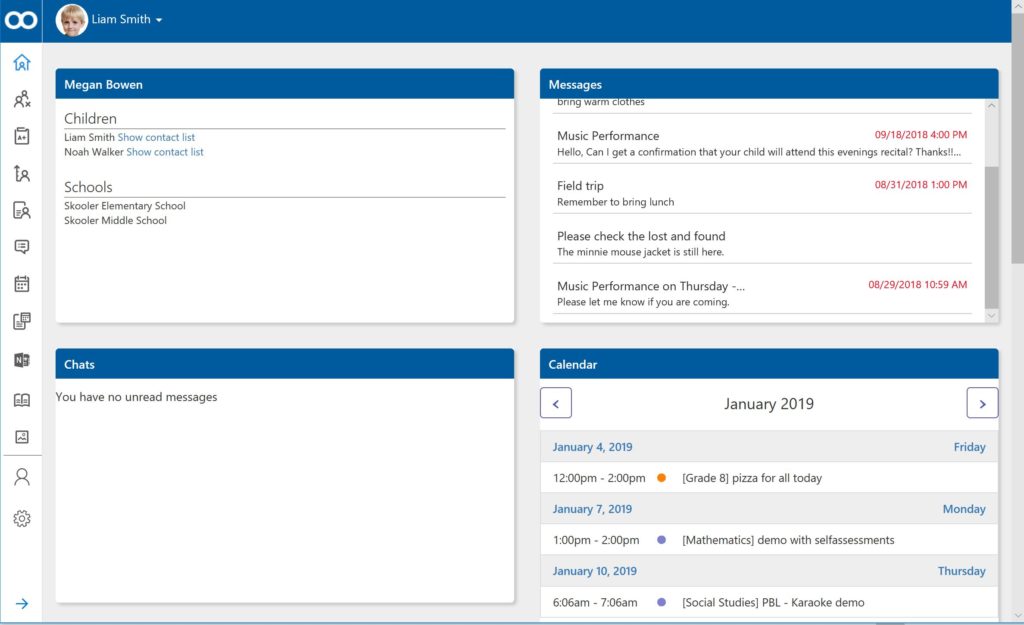Technology has become pervasive throughout society. It’s hard to imagine walking through a store or restaurant and not see most people looking at their phones. You can argue the merits of having so much technology at our fingertips, but for teachers, new forms of technology have changed the education experience for both students and parents. Technology has reshaped the way parents and teachers interact and apps for smartphones, such as text-messaging, email and social media, have transformed the entire education process which, in turn, has ushered in a new era of teacher-parent interaction.
According to the Harvard Graduate School of Education report, The Effect of Teacher-Family Communication on Student Engagement: Evidence from a Randomized Field Experiment, having frequent teacher-family communication improves a student’s performance in school. On average, teacher-family communication increased the odds that students completed their homework by 40 percent, decreased instances in which teachers had to redirect students’ attention to the task at hand by 25 percent, and increased class participation rates by 15 percent.
One of the many ways that students can have a positive experience in school is if there are open lines of communication between teachers and parents. Having a good teacher-parent relationship can help improve a child’s performance, increase teacher productivity, and establish trust between the parent and the teacher. When students see that their parents are in contact with the teacher on a regular basis, it helps establish trust between the student and the teacher. Having a strong communication system between teachers and parents offers another benefit.
“A positive parent-teacher relationship helps your child feel good about school and be successful in school,” advises Diane Levin, Ph.D., professor of education at Wheelock College. “It demonstrates to your child that he can trust his teacher, because you do. This positive relationship makes a child feel like the important people in his life are working together.”
For teachers, the ability to develop a close, personal connection with parents is invaluable. There are many technologies available that help keep parents informed including a classroom website, a school website, a grade book or homework page, and sign-up for conferences, just to name a few.
Connecting with parents
Skooler was designed to help students, parents and teachers work together to create a more successful classroom experience. Beyond integrating with Office 365 applications such as Teams, Word, Excel, PowerPoint and OneNote, Skooler provides teachers with the ability to share classroom and student information including:
• Grades
• Attendance
• Assignments and homework
• Calendar
• Class notebooks
• Photos and videos from field trips and classroom projects
• Managing parent/teacher communication
o Two-way chat with SMS/Text support
o Messaging with polls and attachments
o Distribution of weekly info letter

Five tips to strengthen teacher-parent communication
• Communicate frequently: Regular communication between teachers and parents is paramount to having a successful experience for students. While it can take a lot of time for teachers to communicate with 25-30 parents, regular updates help improve the lines of communication. Technology allows teachers to easily update parents on how their child is doing in class, document interactions, and keep parents updated in real-time. In addition, using technology to communicate means that students won’t be responsible for bringing home updates, like think-sheets or field trip forms, to parents.
• Be a good listener: It’s easy for parents to become emotional when discussing their child’s education. It’s important for teachers to realize that parents don’t always know what is going on in the classroom and they might not have an accurate picture of how their child interacts with other students. Teachers should focus on hearing what parents are saying and try to understand where questions might be coming from. Even when communication is done via email, it’s important for teachers to acknowledge what parents are feeling.
• Establish trust: Parents need to feel as though the teacher has the student’s best interest in mind. It may be hard for some parents to look at their child’s capabilities objectively and that’s where the teacher comes in. Teachers have to look at each child as an individual without an emotional bias that a parent may have. When a teacher exhibits compassion and appreciation for what a child brings to the classroom, parents are more comfortable and are more open to listening to and accepting what a teacher has to say. Communicating updates, test scores, and behaviors helps go a long way to establishing trust.
• Share a variety of information: In the past, parent-teacher communication was largely centered around scheduling conferences and alerting parents to issues (usually negative) about a student. Teachers should let parents know when their child has done well, either academically or socially, when there is a problem such as a low test score or if there is a cause for concern such as falling behind classmates.
• Stick to your plan for communicating: Back to school night typically happens in the first month of school. It’s important for teachers to explain how they will be communicating with parents (frequency, topics, scheduling habits, etc.) and follow through on what was originally outlined. This tells the parents that the teacher has a plan and is organized which helps instill confidence in the teacher.
While there is no perfect formula for how teachers and parents communicate, having a system in place that is supported by technology helps improve the student’s experience in school.
